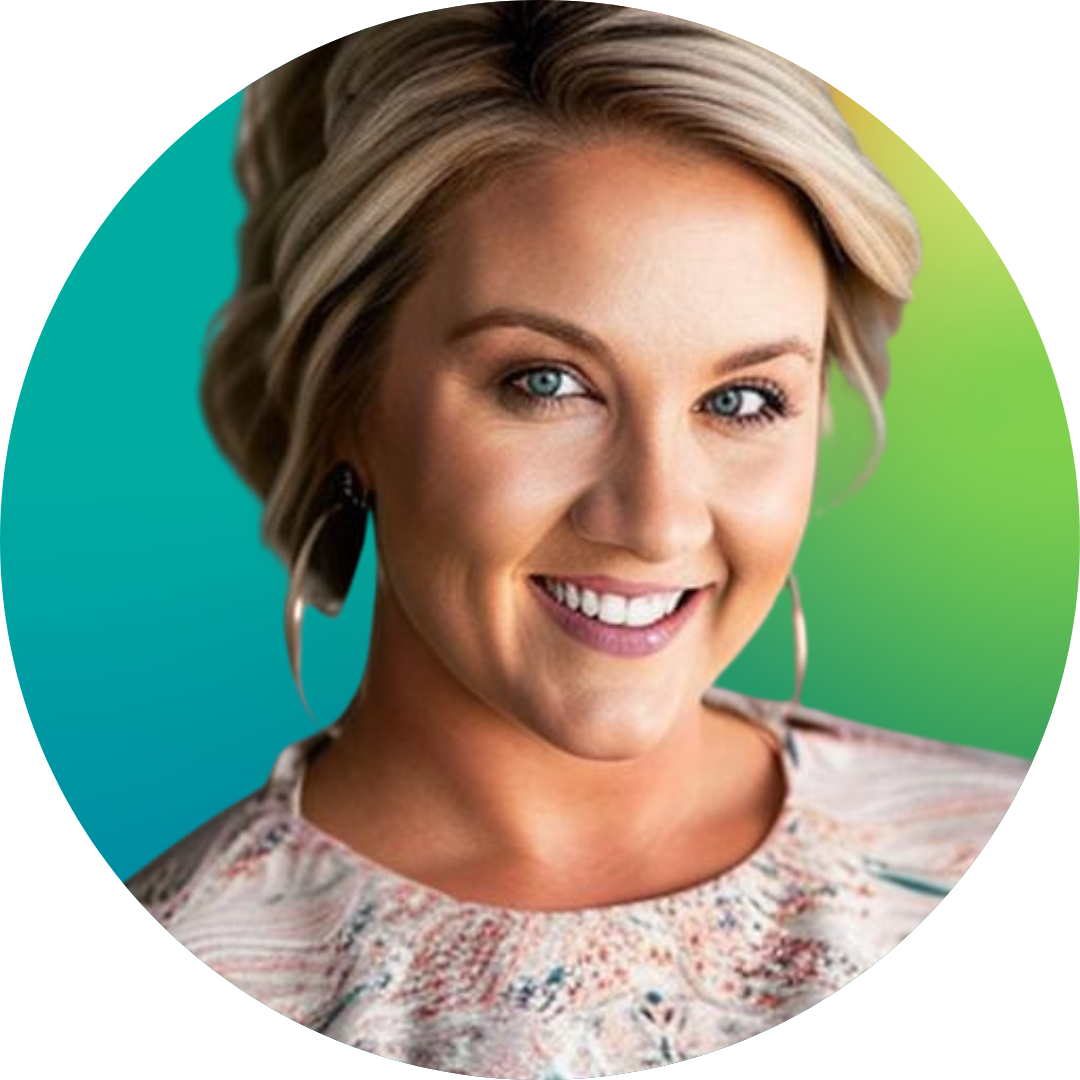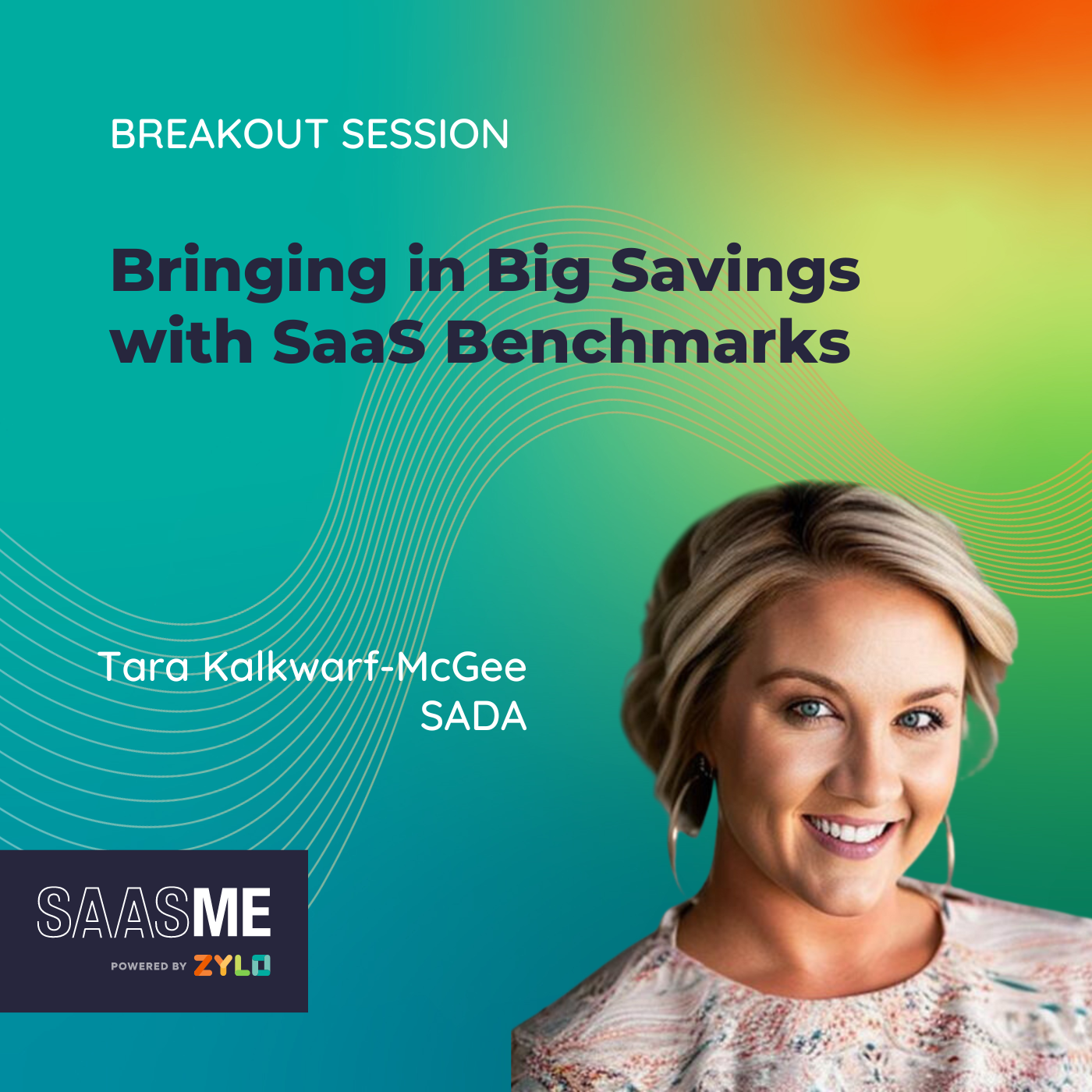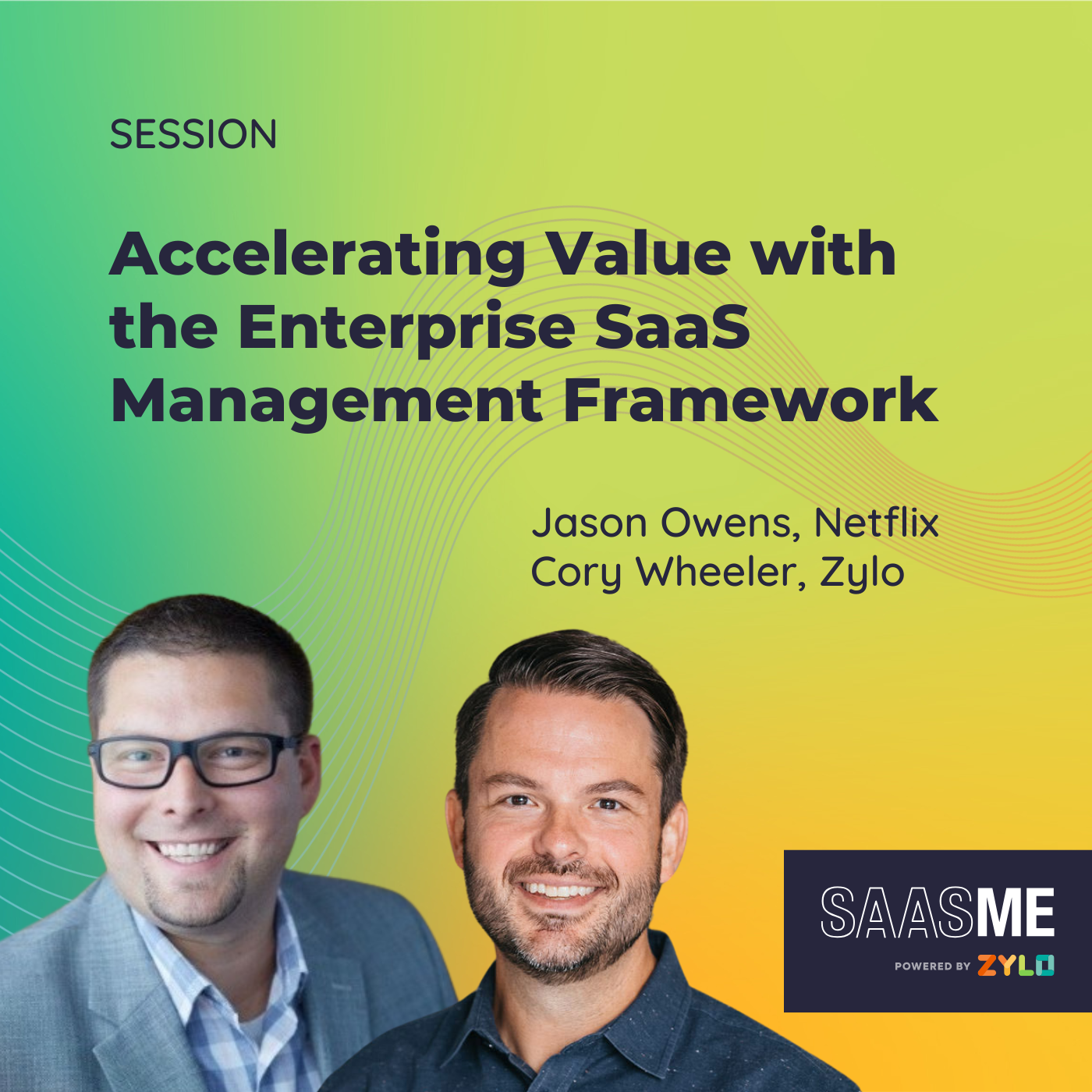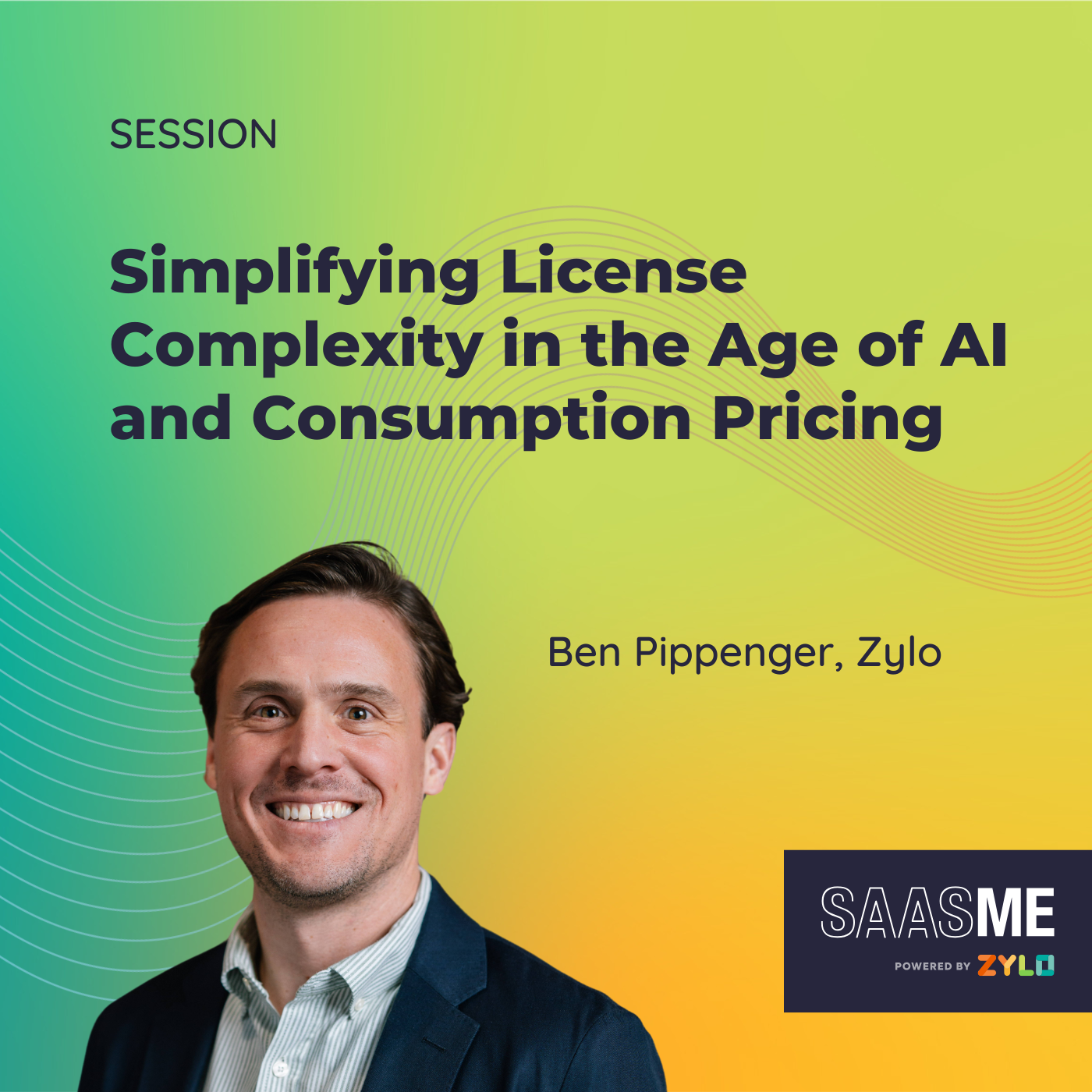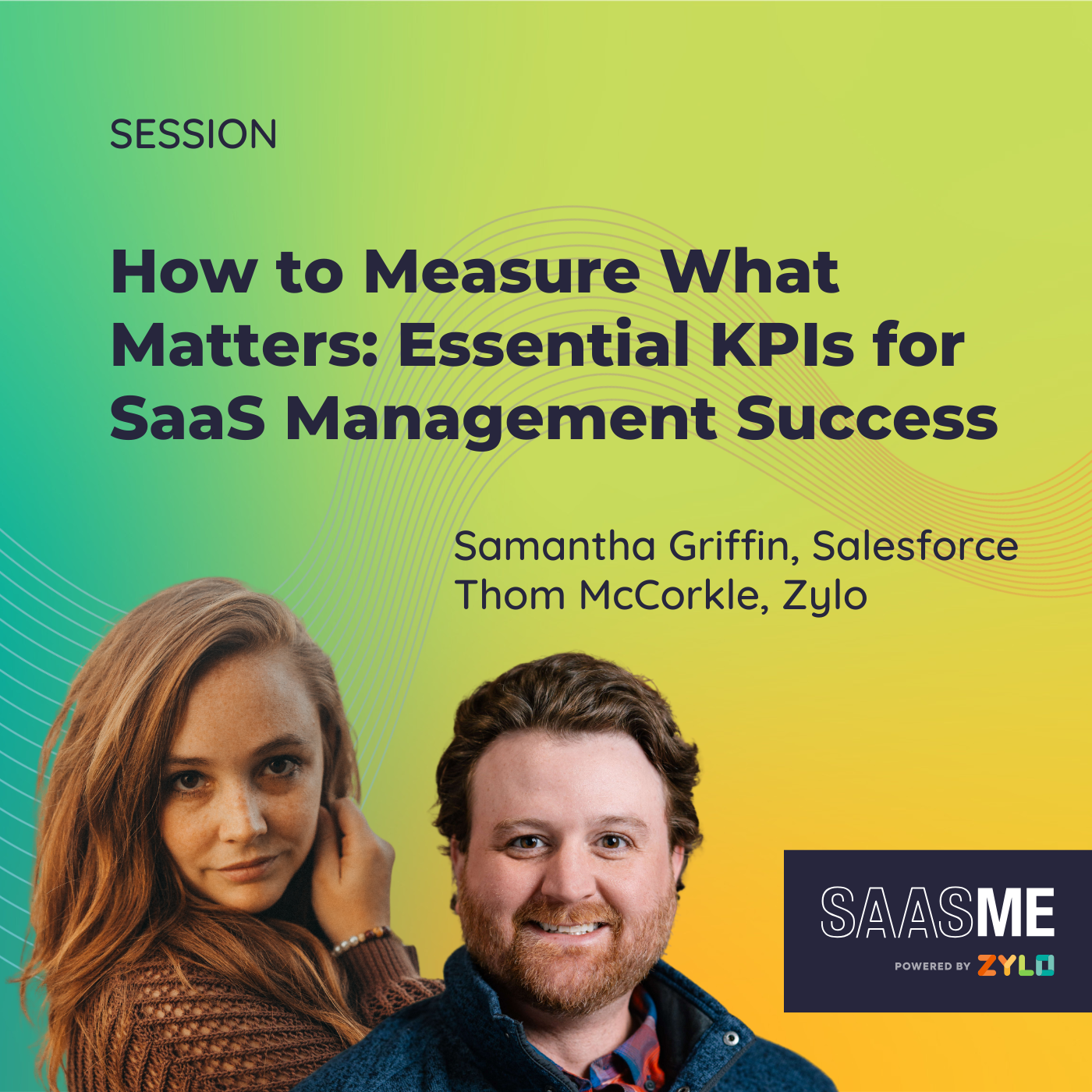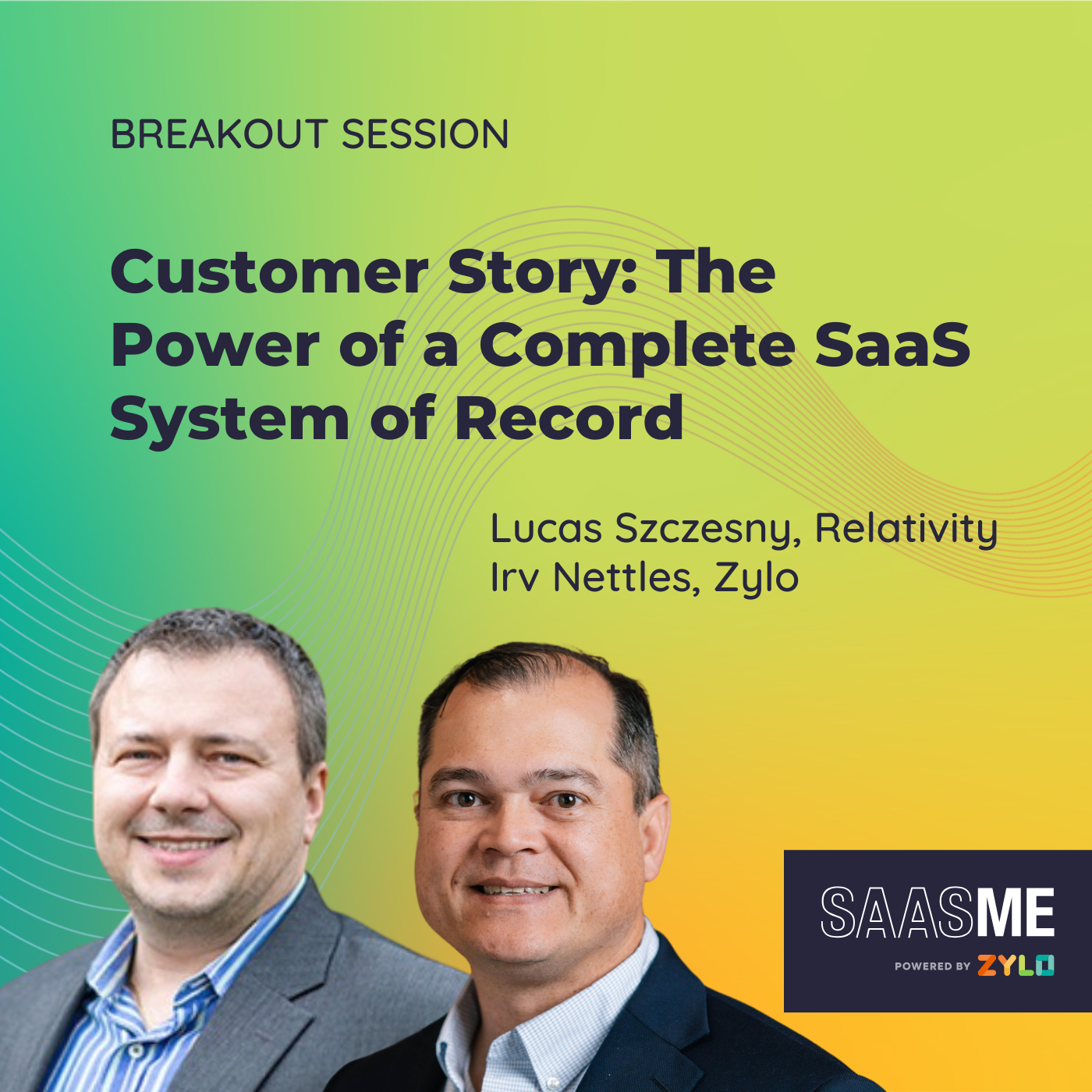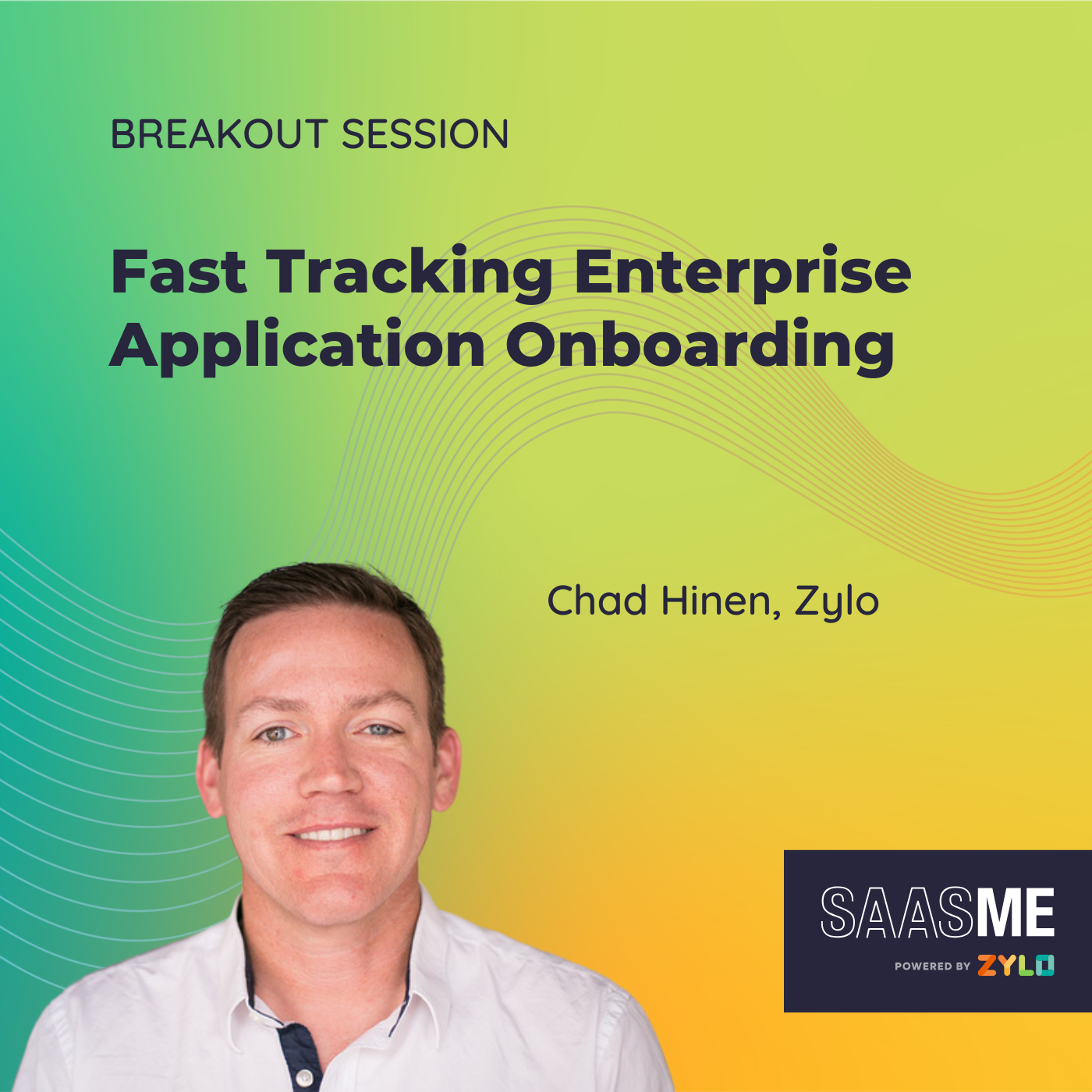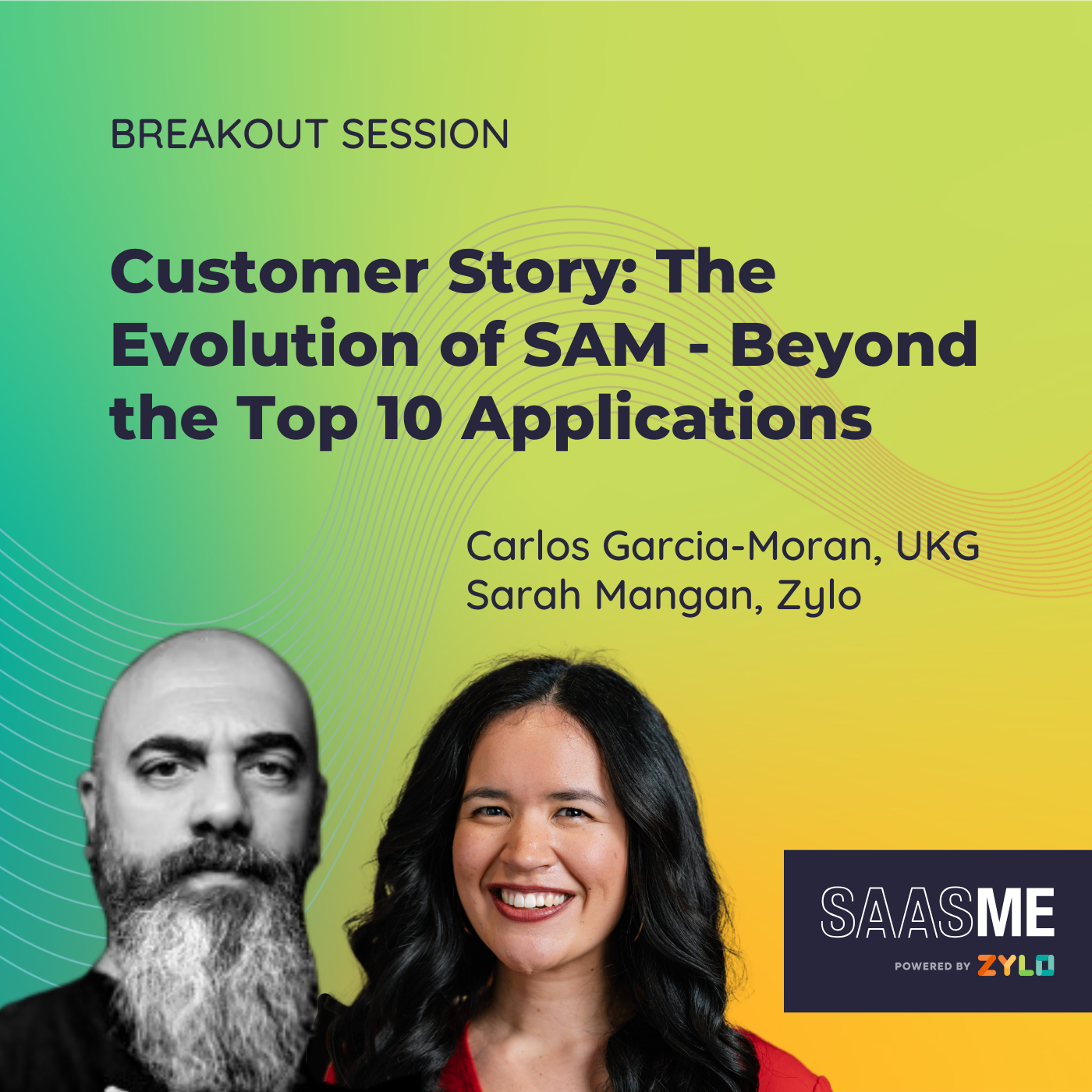Bringing In Big Savings With SaaS Benchmarks
- 0.5
- 1
- 1.25
- 1.5
- 1.75
- 2
Sarah: Thank you all for joining us today. Really excited to have Tara here to talk about the great work she's doing with Benchmarks. Tara, I'll give you a chance to introduce yourself. We'd love to hear about SADA, your role and how that fits into SaaS management.
Tara Kalkwarf: Hey Sarah, thanks for having me. My name is Tara Kalkwarf. I am the Manager of the Vendor Management Office at SADA. SADA is a leading global business technology provider and my role at SADA, we have everything from vendor operations to partnership operations, so start to end lifecycle with everything in between when it comes to vendor management. I have a little bit of background in several different industries. The technology spaces, the insurance, financial industries and consulting services in between. Anything from aerodynamics to food supply chain management with a key focus on program management when it comes to the Vendor Management Offices or rebranding of Vendor Management Offices.
Sarah: That's incredible. Tara, I've seen in the rebrand all your wealth of knowledge and experience being shown, so that's very cool to hear. Kind of want to lead with help us set the stage here. Can you tell us about how SaaS management has evolved at SADA? You mentioned rebranding. I know that's something you've worked a lot on. Would love to hear a little bit more about that.
Tara Kalkwarf: Yeah, absolutely. Our relationship with Zylo started back in 2021 with our IT department. This is before I was at SADA. They really needed to hone in on visibility into our tech stack. They needed to globally organize all the technology and the SaaS that was out there, limit shadow IT, and just get a clearer picture of all the tools that were being used at SADA. Then another big thing was taking away the manual processes. We knew we needed a tool to support, we didn't know where that was. We ended up with Zylo in 2021. Fast forward a little bit throughout 2021, executive management made the determination that we really needed to have some centralization. We needed to have a full- time support staff because these efforts were much larger than we could have imagined. About around March of 2022, I was hired at SADA to rebrand and build the Vendor Management Offices within SADA. I was there for a very short period of time. I got introduced to the Zylo product. I hadn't had experience in the Zylo product. It was very exciting to learn that this amazing IT department has already set the foundation of the success within the Zylo instance, to learn about all the capabilities that were already there and things that were working well for us. Big shout out to the IT team to be able to do that. We kind of shifted that responsibility of management of the account for Zylo into the Vendor Management Office with IT really being a support staff that kind of took the sideline approach to helping still manage Zylo, still be part of the day- to- day, but really shifting responsibility to vendor management. And I was working with you as my customer success manager and sharing some of the goals for the long term program. And very quickly we were able to identify that Benchmarks was going to help this team solidify those big goals that we had for 2022 and beyond and be able to achieve a quick ROI, let alone show the value and the importance of what we're doing in the Vendor Management Office. That was towards the middle to end of 2022, and then we solidified Benchmarks and we've been running with it ever since.
Sarah: Oh, it was so fun, Tara, when we were having the initial conversations, you're a seasoned procurement pro and going into those negotiations when you were talking about benchmarking, before we even got to that, what was your exposure or experience with benchmarking prior to Zylo?
Tara Kalkwarf: Yeah, that's a fair question. The exposure within my world with tooling that compares to Zylo, it's been very minimal. A lot of us that sit in the leadership roles within procurement sourcing, strategic sourcing, vendor management, we know the pain that we experience when it comes to negotiations, understanding our spend, understanding are we getting a fair market value? It was pretty manual efforts. There was no benchmarking that was available that could lead us to a competitive advantage. And I hope that the statement I resonate or that I'll make next resonates with probably a lot of the audience listening in. We are in a different time right now. Our leaders, top level leadership have an expectation of US procurement sourcing and vendor management professionals of finding those cost savings and expecting it from your programs, especially given the economic uncertainties and the impacts that we're seeing across all global sectors. So the companies are coming to us, whether it's a dollar amount, a million dollar savings in SaaS, maybe it's 10% of your SaaS spend for the year, or maybe you're one of the lucky ones that it's give it your best shot. But nonetheless, there is a hyper focus on cost savings across all industries right now. Kind of reminds me of a story that I'd like to share is not too long ago in a previous role I had, my executive leaders came to me and they said, " Hey Tara, we just finalized the company OKRs. They're going live on Friday. We decided after looking at the data, your team's going to spend four or go find$ 4 million in cost savings for vendors." And I knew what that meant. I had been there, I'd been meeting this team and we've seen great wins and successes, but it's a big ask and one that we'd never had asked to provide before. So over the next couple of days, I spent a lot of time focusing on how can I make this better? There was no solutions on the market at that time. It was back to the old ways of trying to find these cost savings. Google, Gartner, which is a very... A lot of people that are using Gartner, but nothing that could really provide us with quantitative and qualitative data that the benchmarking tool allows us to implement and really achieve excellence in the market and know that we have the contingency and we feel confident going into negotiations. And that's a big thing that the Zylo benchmarking tool has done. We finally have visibility into something that we haven't had before, and Zylo is breaking ground into allowing us leaders to spend less time looking for the benchmarking online and putting it right in front of us to make sound business decisions and really execute on cost savings.
Sarah: That's incredible. And looking at those sound business decisions, help us paint the picture for the audience. How are you using Benchmarks to drive your cost savings efforts? I know you're looking at that four million, what does that look like?
Tara Kalkwarf: Yeah, so we use the Benchmarks for a few different ways. I'll call out the first one, which is negotiation strategy. Now that we have this available data to us and we can make good business decisions and I can put my resources to work to understand what they really need to focus on, we're able to look at this negotiation strategy. If we are configuring the data and we see that, " Hey, we executed a really good deal on this and we're below average or we're on the low side, we're not going to spend" ... I'm not going to send my team off trying to find savings. I'm going to look at maybe where we're average and we can negotiate that pricing down and spend maybe a little bit more time there. Or we have these large spends, or maybe it's not even large spend, but we're overpaying. That's one of the ways that we're using Benchmarks is to really build out the 30, 60, 90, 120 plus days out on where our team will spend the focus of our time. The other way is when we, in the Vendor Management Office, I spoke earlier, we handle onboarding, offboarding, renewals, you name it throughout the life cycle. The other way that we help or that Zylo Benchmarks helps is that we can take a look at these termination requests that are coming in and people saying, " Hey, we don't want to use the spinner anymore, but we can't let go of this tool. We have to really be able to continue to find a separate service provider, but we don't know where to go." With the benchmarking data, it allows us to stack up that competition and understand, " Okay, we had a really tough time with this vendor, but here is the market for the other service providers in that space," let alone configure the pricing against those to know, to get ahead of the game in those conversations that we're having. So we're using it for the termination strategy. We're also looking at it from an RFI perspective. Many of us have probably ran so many RFPs or RFIs or RFQs, and it takes a lot of time just to get pricing back. And oftentimes we'll go online and you see the business license is a hundred bucks, the teams license is 150, and then you get this big blue button that says, " Contact sales." And it's always that dreaded button that you have to start the conversation. With Zylo it's there, when we can go in and we can configure the data based off of our use case, I don't have to go click that big blue button that says, " Contact sales." My team has an inherent understanding of what we're looking at from a pricing perspective and what's competitive in the market. We can remove vendors out of our bucket for the RFX process by configuring that data and knowing that, " Hey, they might be a little bit more expensive based off of what we're seeing." Then some of the last items of how we're using the benchmark data is understanding what's in our tech stack today, understanding how that applies across the financial perspective. If we have a redundancy in our tech stack, whether intentional or not intentional, we can take a look at the information inside of Zylo to take a peek into the overall aspect of how much are we paying? Is it really worth having two tech stacks here when we're spending$ 250,000 for each tech stack? And when we configure the data, again, we can say, " Hey, this looks like it's going to be more impactful," number one, because not everything's about cost, but more impactful because we're seeing really great results with this service. But number two, we're able to drive these costs down with the leverage of knowing, " Hey, we have options and we have an understanding of what those options cost," where back in the day, it was easy to get certain levels of discounts for loyalty or going to them and saying, " Hey, we deserve a discount" or, " We think we need a discount." Back to my earlier statement of the contingency and really the confidence of coming into these conversations, we're able to use that, the data inside of Zylo to go in with those conversations with our third parties. Those are a couple of different ways that we're really using Zylo to see some of the biggest impacts, let alone the cost avoidance that we're seeing going into new vendor like exchanges. We're seeing massive savings when it comes to some of these new vendors that we're coming into to have negotiations with, all within a couple of minutes of configuring the data.
Sarah: Yeah. Oh my goodness. You hit so many high level themes of zooming all the way back, looking at your stack as a whole and using the data when you're comparing termination requests versus getting as granular down to the SKU level detail of driving those wins, Tara, and how you've looked at your strategy and hit all of those elements as you're leading the VMO office. Wanted to dig a little deeper into that really granular piece of cost savings. I remember it was a week after you got Benchmarks, you came back with some very great ROI and some wins that you were tracking towards. Would love to hear more about those ROI wins, how you got them, what they were. I mean, you came in hot off the press, you were ready to go.
Tara Kalkwarf: Yeah, there's nothing like making sure that we solidify that ROI. I sold Benchmarks on the sole knowing and trusting that, " Hey, we will get our ROI back." I was beside myself when we logged in and we were under an active negotiation with a third party and we ran the data through Benchmarks and within the first week we had a$ 50,000 cost avoidance within that first run of Benchmarks. I was so happy to be able to go to that leadership and really share, " Hey, these are the things that we were able to do and execute within the first week. Can you imagine what we're going to do in the first month?" And at that time it was also we're having these conversations about do we add another resource? Zylo really helped us know we don't need that resource to negotiate because Zylo was helping us with the negotiations. So that was a big, big win for SADA, and it really did start us on that track of feeling confident and competitive. A couple of other bigs... Big ones, excuse me, I want to talk about is we were going through a negotiation. This is an existing tool. It's a hot tool on the market, it's a messaging and collaboration tool. And we thought we had this great partnership, we were getting this really good deal and we were able to just renew as is. We ran this through Zylo in the benchmarking information and how quickly did we find we weren't getting an awesome deal and we really were over market. We were able to secure about a 15% discount across the two year deal, really driving the better package for SADA all without having to eliminate licenses or other things that sometimes you have to play the game when you're trying to look at cost savings or avoidance. We were able to do a straight renewal with that discount based off of the benchmarking data. Another fun one to talk about is we have an applicant tracking system that we use. Again, it's another popular tool in the market. And we started, the business had come to me and they said, " Tara, we're really struggling with this spender. We've had some capability challenges, we've had some support challenges. We're really looking at replacing them." And I said, " Okay, well, we need to go look at competitors in the market. Can you help me understand who you want me to go have conversations with?" All in the same time, I'm running this through Zylo because they couldn't figure out who the best competitors were. We were able to stack that data inside of Zylo Benchmarks to identify who we were going to reach out to for the RFQ process. And at the same time, we ran some pricing through the process. And again, we found that we were overpaying for services. Between the benchmarking data, competitor pricing data, we were able to secure a package, rebrand our partnership and the vendor relationship, excuse me, and get back to having a solid foundation all while leveraging the data that we had inside of Zylo and the competitor pricing to secure almost a $ 20, 000 savings. There's no other way of saying it besides, you can't help but feel empowered in your team. Like your team, when you're getting a$ 20,000 savings, $30-50, 000 savings with using this tool, your team starts feeling put together. Your leadership starts trusting you. This was one of those big wins for SADA because again, we were having some challenges. Then to find out that's another burn to us was we're overpaying. Thankfully everything's resolved, everything's been great, but it's always a fun one that our team likes to continue to talk about. Another big exciting one that I really do like sharing, it's not secured yet, so no ink on paper, but it's a big one that that's coming up. We have this tool and it's used for diagramming content creation, and it's really used in a lot of the technical spaces here at SADA, not necessarily an enterprise application, but it has a lot of users. And we were up for renewal recently, and we started going through the formalities, Zylo's part of our... It's part of the SOP of like, " Hey, you have to check Zylo." A team member comes back and she says, " Hey, I ran this through and I don't think that this is right, Tara, because it's a lot of money." And I was like, " Well, what are you talking about? How much?" And she'd share like, " That's like over$ 55- 58, 000. And we've been doing business with this company for a long time." And I was like, " You didn't renew the licenses?" She's like, " No." We went to the vendor and I said, " Hey, look, we have this tool that we use for benchmarking, and I'm not comfortable renewing as is right now. We are extremely overpaying for services and we're not removing license counts either. We need to make this right. How can we make this right?" They're kind of playing the game of back and forth. And I finally said, " Look, I will show you the screenshots if this makes you feel comfortable." And you could see it immediately of the despair of, " Oh my gosh, this exists." Lo and behold, we have come to a final pricing agreement, but it really took us all by surprise, the amount of funding that we're going to be receiving back. And it's not avoidance, it's a direct savings. Those are some of the big wins that we always like talking about or that I like talking about, and I'm very proud of because it continues to engage our leadership and the trust in the program. And some programs when you're new, because we are a newer program, you're trying to achieve the ROI immediately. You're trying to make big, big impacts. And when you don't have the right tooling such as benchmarking, your journey takes a little bit longer. SADA, we've been fortunate, and Zylo has been such a unique add to the services that we are able to provide within our department that can make just a huge impact in a very small amount of time. SADA definitely, we have a very good use case and we continue to partner on a monthly basis to know and understand, " Hey, these are big wins for SADA that are coming up."
Sarah: Oh yeah. And as you've built this program so quickly, taking your industry experience and building it out, you've learned a lot of lessons and would love for you to share with those watching, what wisdom would you pass to someone who maybe wants to start using benchmarking data?
Tara Kalkwarf: Yeah, I'll start with a lesson learned. I'll be vulnerable for a second. Being new to SADA, being new to the Zylo products or the Zylo instance, excuse me. I wanted to make this huge impact and I was bound and determined to boil the ocean. As soon as we started getting into the system, we were configuring the data and we're looking at everything. And I had the rest of the year pretty much planned out of our plan, and it became a little bit overwhelming of like, " Oh my gosh, we have so much potential and we have so much work that we can do." I think the biggest lesson learned from me is taking a step back, making sure that we were foundationally ready, which I spoke about my amazing IT department. They helped us get there to the foundational readiness building blocks, but making sure that that is there in place and then making it more tangible. Yeah, we all want to go save that$ 4 million I spoke about earlier, but the reality is small chunks at a time. Start with your 60, 90, 120 day renewals. Start there and really hyper focus in on those and lean into having that data there at your fingertips for those, and then still planning out as you have time, but not trying to plan for the whole year and trying to really put a target number on those cost savings just by maybe getting too excited about something. That was a big lesson learned for me is the knowledge and the data is very powerful, so use it to your advantage. The other thing is, in my experience and in the world that I come from, we've traditionally managed in our renewal strategies as such, to attack the bigger spend. Go look at those bigger vendors, go negotiate those big dollar contracts and put less of a focus on maybe the smaller dollar contracts. The reality is I learned very quickly that actually that methodology doesn't work anymore using this tool because you can really do it all. I don't have to pick and choose a renewal if it's big or small amount. We can negotiate based on that negotiation strategy that we talked about. We can do it all and still have success because even the big ones, yeah, we're saving those 30, 50,000 plus dollars. We have the ability to still save 6- 5000, and that's still an avoidance, so it's still a cost savings back to your organization.
Sarah: Tara, thank you so much. It has been a privilege hearing from you, working with you. Really appreciate your partnership and continue to look forward to how many more wins you're going to drive in as you've built such a strong foundation. You've grabbed wins, and as you're able to manage it all, really excited for continued partnership and so grateful for your time to share with me and also with everyone else watching.
Tara Kalkwarf: Awesome. Thank you, Sarah.
DESCRIPTION
Knowledge is power. SaaS benchmarks arm you with critical data you need to tackle every SaaS decision - whether a new purchase or a renewal - with confidence. In this session, you’ll learn how to stop leaving money on the table and start negotiating smarter with the help of SaaS benchmarks.
Today's Guests
